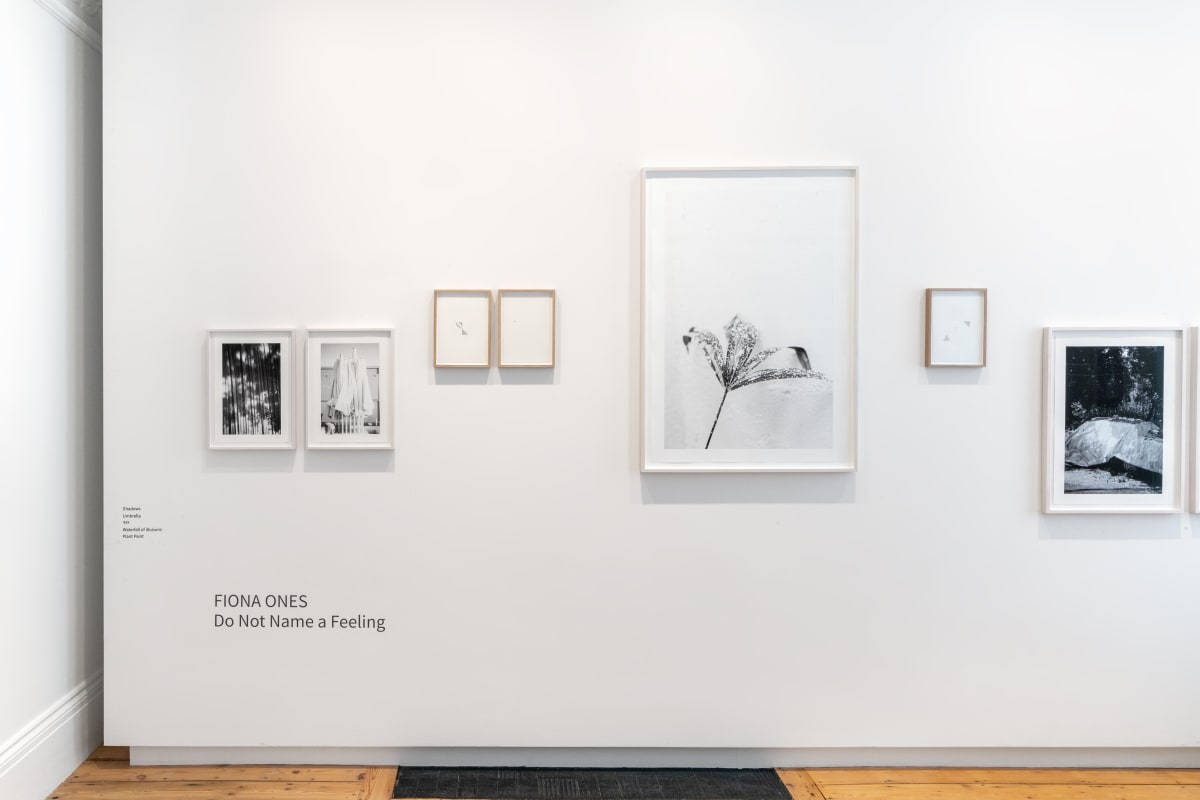Fiona Ones | Do Not Name a Feeling: 4 Cromwell Place (Gallery 10) + 1a Tenter Ground
ai. is pleased to reopen with a solo exhibition of new works by Fiona Ones (b.1985, Germany) at two locations: 4 Cromwell Place (2-13 June 2021) . On the occasion of the inaugural London Gallery Weekend, there will be an extension of the exhibition at 1a Tenter Ground (4-6 June 2021) - A.I.’s newly relocated space.
Do Not Name a Feeling comprise both photography and works on paper. Fiona Ones’ primary interest lies within the shifting boundaries within the photographic medium. The artist is also concerned with exploring the parallel between photography and drawing. Using experimental techniques, her practice has evolved to challenge the engagement with surface, light, negative and positive and the trace; the sense of an invisible 'apparatus' (the camera, pen or needle). Exhibition text by Christian Ganzenberg.
- - -
Everyone has dreams and ideas. We love illusions and storytelling about ourselves, our fellow human beings, and about our future. The ability to develop our own ideas, to think in stories and to make precise arrangements in our day-to-day as well as to live in our daydreams and build castles in the air are primal human characteristics and crucial for our own personal story. Through the course of our lives, however, we unlearn this ability to dream creatively; we find ourselves caught up in the everyday routine and duties. Nevertheless, at times, an encounter or a sudden change can jolt us out of our routine, forcing us to ask ourselves: who we are again? How did we become who we are? And, who do we want to be? Then we look back, remembering rudimentary notions of ourselves before once again, allowing room for our own fantasies and imaginings.
Such an observation of our 'conditio humana' underlies this exhibition Do Not Name a Feeling, in which Fiona Ones explores the question of when our utopias meld into our reality. Her photographs are concentrated shots of such casual moments, abstracted reflections of real structures, landscapes and attitudes. At the same time, her gaze is unusual, sensitive, usually the camera looks from the bottom up -the details of each image focus on geometries, reflections or individual constellations. They are memories of personally experienced 'sensations'. So, we won't forget.
The pared-back black and white, blurred grain images emphasize the play of light and shadow, allowing textures and outlines of plants, clouds and objects or the ephemeral to stand out. Instead of concrete names and locations, these photographs make intangible, emotional moments--- tangible. They urge us to make our own assumptions, they require our empathy and reflections. Without a clear definition of feelings, without a language in front of the images, we cannot communicate with an outside, with an other. Yet another, no answer. Instead, the emphasis here is on sensations: its immediacy, and above all, intimacy.
Ones’ exhibition however, does not only pause on the above-mentioned wonderfully approximate and ambivalent arena: her drawings evolve from true, personal, quantified observations. At the beginning of all these drawings are a self-chosen measurement, an emotional survey between a sensed location and an experience, a remembered 'safe haven', a place or another person. Ones uses her multi-dimensioned sensations as a basic measurement for the construction of her drawings, usually as a radius: 3.49cm. With this orbit, symmetrical structures arise from two points in Never met, but slightly touched. The geometries almost seem to mirror each other, but the drawing is composed in such a way that the lines can intersect but are never tangent. Eternal encounters and non-encounters. Overlapping and intersecting, without meeting, touching at one point. Connected, but missed each other.
Ones achieves the meditative rustle of her drawings using a needle, with which she pierces the surface of the paper, thus inscribing her own topography on the sheet. As soon as these "pointillist études" appear with the directional beam of sunlight, the shadows of the punctures expose their depth, an almost spatial melody. Around the geometric lines, delicate clouds of pinpricks and pencil hatchings grow up fleetingly, condensing spherically and then losing themselves again in the porous white of the paper. This process of creation is time-consuming, repetitive, almost meditative; it is here that Ones’ drawing fantasies flourish, with which she makes the paper shimmer and resound. Do Not Name a Feeling makes clear the polarity of Ones’ artistic expression. Throughout her practice, Ones is not only able to combine photography with drawing in coalescence with abstraction, but most importantly to bring illusion and reality together.
-Christian Ganzenberg
-
 Fiona Ones, Creole , 2020
Fiona Ones, Creole , 2020 -
 Fiona Ones, Palm, 2020
Fiona Ones, Palm, 2020 -
 Fiona Ones, Beirut, 2020
Fiona Ones, Beirut, 2020 -
 Fiona Ones, Waterfall of illusions, 2021
Fiona Ones, Waterfall of illusions, 2021 -
 Fiona Ones, Eye, I, You , 2021
Fiona Ones, Eye, I, You , 2021 -
 Fiona Ones, Eye, I, You , 2021
Fiona Ones, Eye, I, You , 2021 -
 Fiona Ones, Reality vs. Illusions, 2021
Fiona Ones, Reality vs. Illusions, 2021 -
 Fiona Ones, xxx , 2021
Fiona Ones, xxx , 2021 -
 Fiona Ones, Connected, but missed each other , 2021
Fiona Ones, Connected, but missed each other , 2021 -
 Fiona Ones, Illusion of permanence, 2021
Fiona Ones, Illusion of permanence, 2021













